Northampton County | Accomack County | Ethics and Conservation
Birding The Eastern Shore of Virginia - Accomack County
Our goal is to provide current, accurate information about some of the Shore’s most interesting birding sites, so that visitors can come prepared to go birding “like a local” and get the most out of their stays in this beautiful part of the world.
The site descriptions here assume that you have binoculars, a field guide to birds, possibly a spotting scope and camera, and that you are familiar with social media, including Project eBird. The descriptions of places cover only the birds that, over the years, seem to be of greatest interest to visiting birders. Carolina Wren, Blue Jay, European Starling, and Red-tailed Hawk, wonderful though they are, do not appear in these accounts, as they are widespread in the East and probably are not the motivation for your visit here.
CHINCOTEAGUE NATIONAL WILDLIFE REFUGE
IN BRIEF: This 13,682-acre refuge is comprised of the southern portion of Assateague Island. The refuge is known worldwide for providing pasture rights to 150 semi-feral horses owned by the local firefighting company, which rounds up the horses in a popular “penning” ceremony in mid-July; large crowds of tourists at this time make a birding visit very challenging.
ACCESS: The refuge is open 5:00 a.m. to 10:00 p.m. May through September; 6:00 a.m. to 8:00 p.m. in April and October; and 6:00 a.m. to 6:00 p.m. from November through March.
GARGATHA LANDING
IN BRIEF: One of many “seaside” boat launches open to the public and a perfect spot from which to paddle to Metompkin Island, about 1 mile to the east. Always worth a quick stop in fall or winter.
ACCESS: Open daily, dawn to dusk (not gated). Port-a-john available at boat launch.
Photo: Bald Eagle by Robert W. Schamerhorn
HARBORTON
IN BRIEF: A classic Eastern Shore bayside cove community on Pungoteague and Taylor Creeks, good for a stretch and a look around if time permits.
ACCESS: A boat-ramp is open during daylight hours.
MUTTONHUNK FEN NATURAL AREA PRESERVE
IN BRIEF: A recent addition to the Natural Area Preserve program, this mostly accessible property consists of shrub-scrub habitat maintained for nesting and migratory birds, as well as a hidden bog-like fen, currently not open to the public.
ACCESS: Open daily, dawn to dusk (open gate manually if it is closed, and close and latch it after passing through). No restroom facilities.
Photo: Northern Cardinal by Robert W. Schamerhorn
QUEEN SOUND LANDING
IN BRIEF: Several pull-outs along the causeway between Wallops and Chincoteague can produce lovely opportunities for photography of common saltmarsh species—shorebirds, Clapper Rail, herons and allies, terns, gulls—as well as a few bonus birds for the list. Recommended for at least a brief stop en route to the Chincoteague National Wildlife Refuge or on the return.
ACCESS: Located on VA-175 in Herntown, VA, 23395. This is a public road with distinct pull-out. Never pull off to the side of the causeway where there are no legal pull-outs, and do not stop or slow down on the causeway, where locals and tourists alike seem to revel in high speeds and short following distances. Drive defensively here.
SAXIS, MICHAEL MARSH AND FREESCHOOL MARSH WILDLIFE MANAGEMENT AREA; MAKEMIE MONUMENT
IN BRIEF: A huge area of saltmarsh habitat, once home to a few dozen Black Rails, still of interest for marsh sparrows, owls, and occasional wintering Rough-legged Hawk. Bird and deer hunting occurs sporadically in April, May, September, October, November, December, January, and February. Wearing blaze orange in those months is advisable.
ACCESS: Limited to roadside birding (take precautions), kayak exploration, and boat tours. No permit is required for those birding from the roadsides or from water.
TANGIER ISLAND
IN BRIEF: A storied Chesapeake Bay island group with a small community, Tangier should be on every birder’s bucket list, if not for any particular birds, then for the experience. Climate scientists predict that the island community might well be uninhabitable in the near future, as sea levels continue to rise.
ACCESS: Foot ferries run from May through September from Onancock, Virginia and year-round from Crisfield, Maryland
WACHAPREAGUE
IN BRIEF: A salty “seaside” town with a fine restaurant, ideal for a short stop to scan marshes at any time of year, or as base for boating or kayaking explorations into the seaside marshes and lagoons.
ACCESS: Public settlement. Restrooms are located at the Wachapreague Town Marina.
Photo: Savannah Sparrow by Robert W. Schamerhorn








